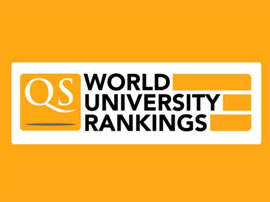MSc Computational Architecture

学历文凭
Masters Degree (Taught)

专业院系
School of Architecture and Environment

开学时间

课程时长

课程学费

国际学生入学条件
IDP—雅思考试联合主办方

雅思考试总分
6.5
了解更多
雅思考试指南
- 雅思总分:6.5
- 托福网考总分:90
- 托福笔试总分:160
- 其他语言考试:PTE Academic - Overall score of 62 with at least 51 in each component (Listening, Reading, Writing and Speaking).
CRICOS代码:
申请截止日期: 请与IDP顾问联系以获取详细信息。
课程简介
相关申请
 预科
预科 奖学金
奖学金 实习机会
实习机会 在校学习
在校学习 跨境学习
跨境学习 校园授课-线上开始
校园授课-线上开始 在线/远程学习
在线/远程学习
学校排名

世界排名601
数据源:泰晤士高等教育世界大学排名
关于西英格兰大学

布里斯托西英格兰大学(UWE Bristol)地处布里斯托市,有三个校区。布里斯托是一个多元化的繁华城市,有大量学生人口,非常适合学习和生活。布里斯托还是一个工业中心,当地就有很多建立人际关系和就业的机会。近几年,UWE Bristol的声誉日渐高涨。在过去六年中,大学对校园设施的投资超过3亿英镑。该大学在雇主中拥有良好的声誉,91%的毕业生在毕业15个月后从事工作或继续学习(高等教育统计局(HESA)2023年发布的毕业生成果调查结果)。其强大的校园社区有160多个体育俱乐部和社团,以新的学生会大楼为中心,是校园生活的核心。该校为国际学生提供迎新活动和一日游,全年期间还会举办很多活动,以此帮助国际学生适应新环境,让他们感觉像在家里一样轻松自在。该大学为其国际社区提供良好的支持,并被提名为2022年Whatuni国际大学。
本校相关课程

研究机器人理学硕士
学历文凭
Masters Degree (Research)
开学日期
课程费用总额


硕士 野生动物电影制作
学历文凭
Masters Degree (Taught)
开学日期
课程费用总额


理学硕士运输计划
学历文凭
Masters Degree (Taught)
开学日期
课程费用总额


理学硕士/研究生文凭/研究生证书运动与锻炼心理学
学历文凭
Masters Degree (Taught)
开学日期
课程费用总额


研究生教育证书中学初级教师教育现代语言
学历文凭
Graduate Certificate
开学日期
课程费用总额


教育学研究生证书中学初等教育数学
学历文凭
Graduate Certificate
开学日期
课程费用总额

其他相关课程

Bachelor of Interior Design (Commercial)
 比利·布鲁设计学院
比利·布鲁设计学院学历文凭
Bachelor Degree
开学日期
课程费用总额


规划硕士(城市设计)/景观建筑硕士
 阿德莱德大学
阿德莱德大学学历文凭
Masters Degree (Coursework)
开学日期
课程费用总额


城市和区域规划硕士
 堪培拉大学
堪培拉大学泰晤士高等教育世界大学排名:470
学历文凭
Masters Degree (Coursework)
开学日期
课程费用总额


室内建筑学士
 堪培拉大学
堪培拉大学泰晤士高等教育世界大学排名:470
学历文凭
Bachelor Degree
开学日期
课程费用总额


城市和区域规划硕士-课程
 西澳大学
西澳大学学历文凭
Masters Degree (Coursework)
开学日期
课程费用总额


室内建筑设计学士学位
 悉尼科技大学
悉尼科技大学学历文凭
Bachelor Degree
开学日期
课程费用总额





















 英国
英国




